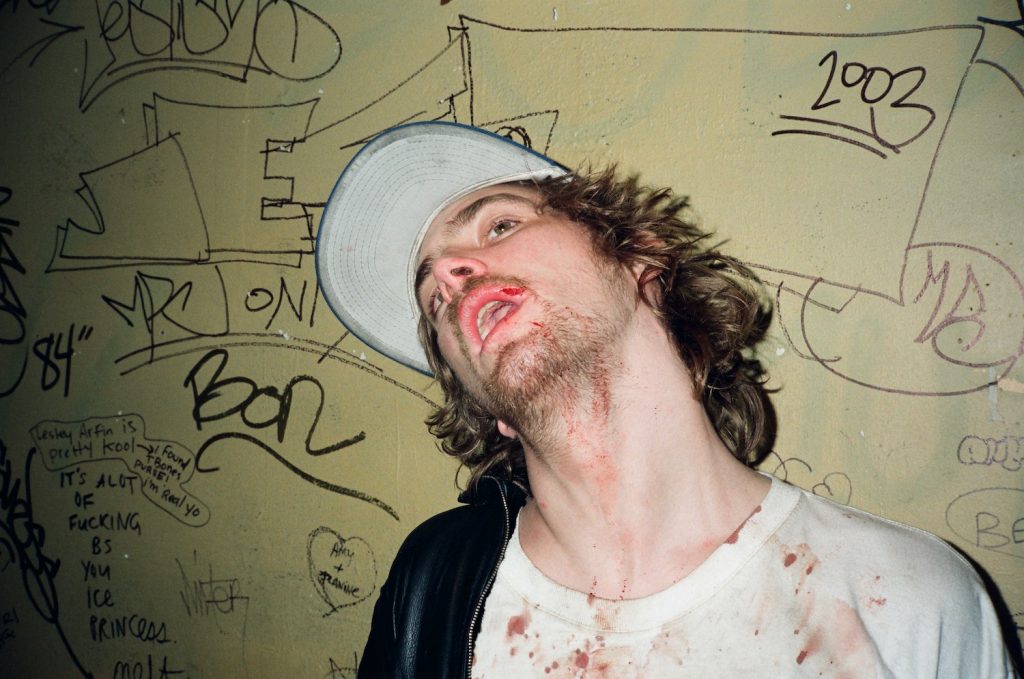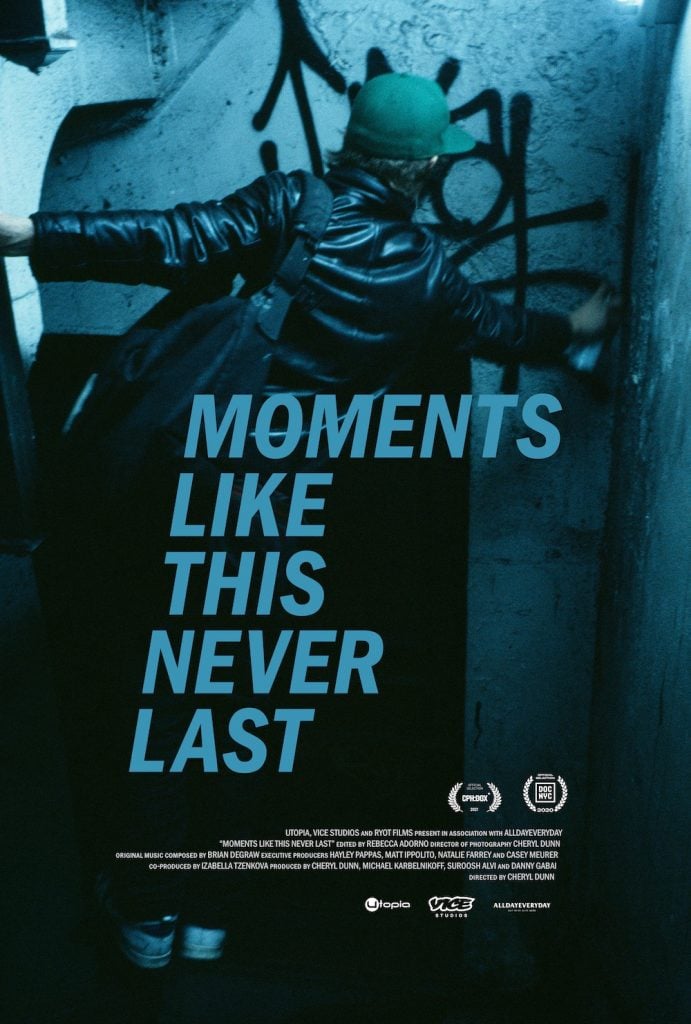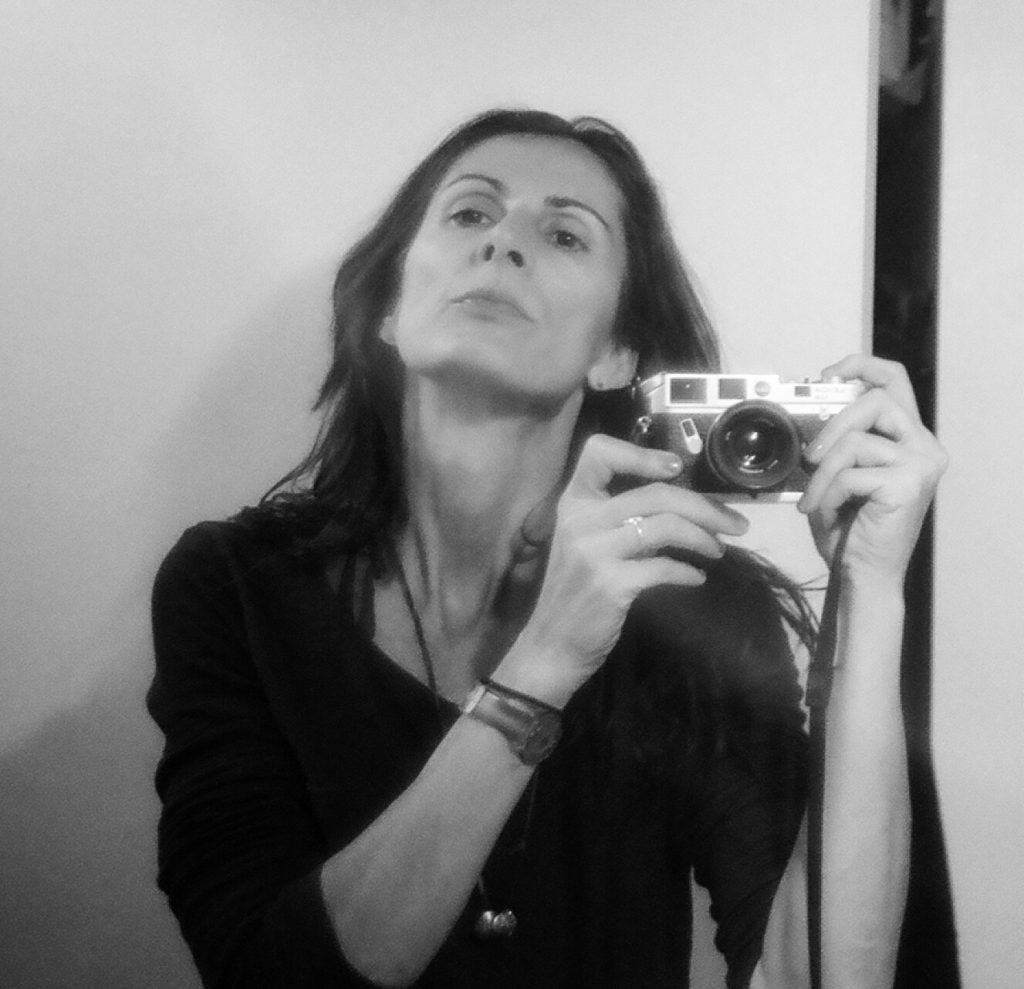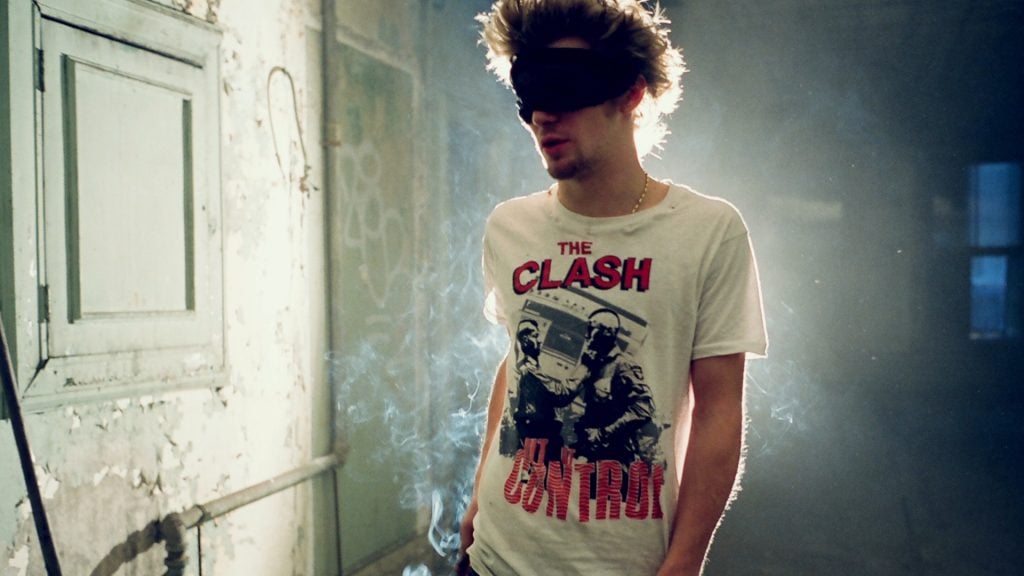Pop Culture
‘I Want People to Have Strong Reactions’: Director Cheryl Dunn on Her Documentary About Enfant Terrible Artist Dash Snow
'Moments Like This Never Last' features never-before-seen footage of the mid-2000s New York scene.

'Moments Like This Never Last' features never-before-seen footage of the mid-2000s New York scene.

Taylor Dafoe

The late Dash Snow is an artist who seems to inspire only extreme reactions.
Generations of scenesters and young art school alums worship his wanton brand of nonconformist cool; the seemingly effortless way he blurred the lines of lifestyle and art; even the twisted romanticism of his untimely death at age 27 in 2009.
Critics, in turn, will point to Snow’s privileged background; the toxic machismo—and dubious quality—of his art; and all the evidence that suggests his seductive, devil-may-care persona was actually rather carefully constructed.
Into this debate comes Moments Like This Never Last, a new documentary on Snow that is perhaps the most definitive look at the divisive artist since his death. It’s certainly the most intimate. Directed by Cheryl Dunn, the film is built around a cache of never-before-seen footage she shot of him over the course of the last decade or so of his life.
“I want people to have strong reactions,” Dunn told Artnet News upon the film’s premiere in theaters last month. (The movie is now streaming on-demand.) “Like it, don’t like it—that’s who I felt Dash was.”
The documentarian, it’s worth pointing out, was a longtime friend of Snow’s, though not an everyday presence in his life. “He was like my buddy,” Dunn explained, before later adding a qualification: “But I was not rolling around with those guys doing blow in apartments.”
For those looking for an objective treatise on Snow’s life or legacy, this is not your documentary. The film doesn’t aspire for objectivity; its aim is more expressionistic, putting the viewer in the shotgun seat next to the artist himself.
We see, mostly first hand, Snow’s journey from privileged Upper East Sider (his great-grandparents were John and Dominique de Menil, founders of Houston’s Menil Collection) to scrappy graffitist (his crowning achievement was tagging the Brooklyn Bridge) to the art world’s favorite enfant terrible whose stories of drug-fueled debauchery overshadowed his own slipshod creations.
“I was very careful not to judge,” Dunn said. “I’m not there to judge the scene, his art, the privilege; I’m here to present.” By the same token, the filmmaker explained, she didn’t sand down the artist’s image for posterity. Nothing that was left on the cutting room floor ended up there because it was deemed offensive.

The poster for “Moments Like This Never Last.”
While the film presents plenty of outside opinions, they ultimately do little to pull us from Snow’s own perspective. We hear, via voiceover, from all the usual suspects associated with Snow—artists Dan Colen, Ryan McGinely, and Kunle Martins—as well as other art-worlders who crossed paths with him—gallerist Jeffrey Deitch, filmmaker Larry Clark, and curator Neville Wakefield—they are rarely presented as talking heads. Instead, footage of Snow roles on as his closest friends and colleagues try to find the words to pin him down.
It sounds as if that’s what it was like being around him, too.
“I made a conscious decision to never veer from Dash’s image or voice for more than five minutes,” Dunn said, describing the doc’s breakneck pacing. “Dash’s point of view and Dash’s art—that was the spine of the film.”

Filmmaker Cheryl Dunn.
It wasn’t just Snow’s hyperkinetic energy the documentarian was trying to approximate; it was the rhythm of the city, especially in the wake of 9/11. The most poignant part of the film, in fact, has nothing to do with Snow at all. It’s footage Dunn shot from her downtown studio window on the morning of September 11, as people in weekday office-wear sprint, deliriously, through waves of debris.
After the attacks, Dunn explained, “money people left, families left, and nobody gave a shit about downtown….So it was just a playground for these kids.”
“It was extreme, it was political, it was wild, it was important,” she added, suggesting that the moment was not dissimilar to the one New York just went through, or is still going through, during and after the pandemic.

A still from Cheryl Dunn’s documentary on Dash Snow, “Moments Like This Never Last.”
Whether or not the comparison of eras is accurate, the film does feel relevant today. Well, really it’s Snow himself that feels current. He seems to have been a figure who, despite his avowed distrust of the public eye, was damn good at curating his own image. Not unlike today’s influencers, Snow’s “job” was as much about maintaining an ongoing public performance as it was about making art.
Finish the film and you’re unlikely to come away with a different perception of Snow than you did coming in. Admirers will likely find it makes them like him more; haters may simply find more fuel for their fire. But if there’s one thing the two camps might agree on, it’s this: Snow had a masterful ability to make a myth of his life—even as—or, perhaps, especially when—the camera was watching.